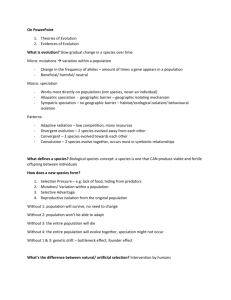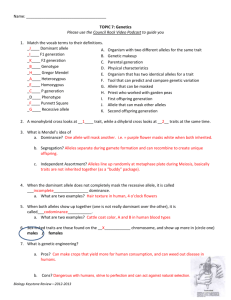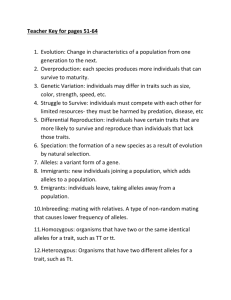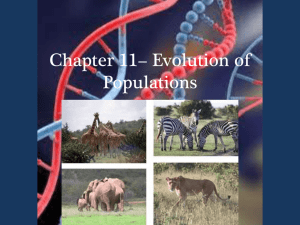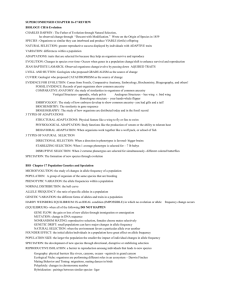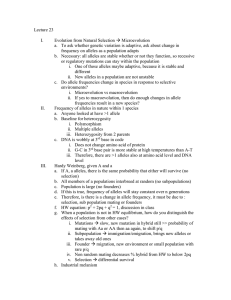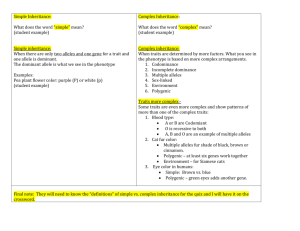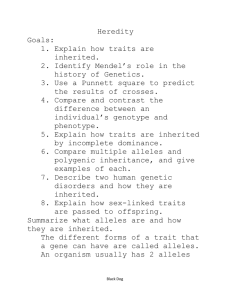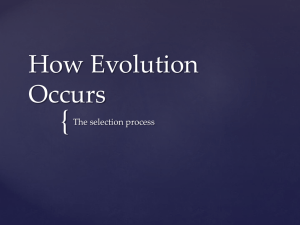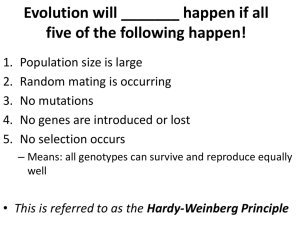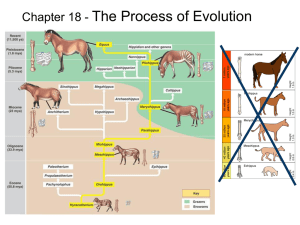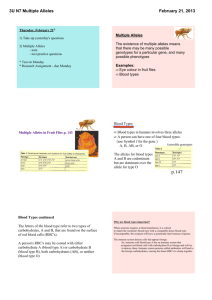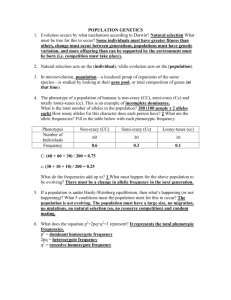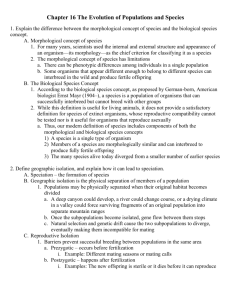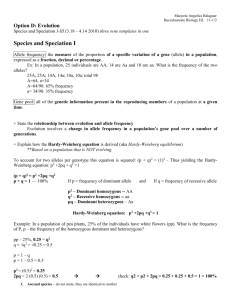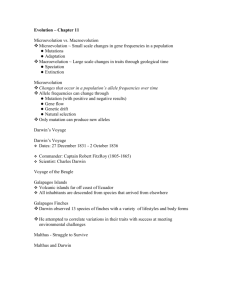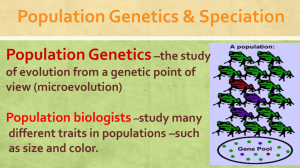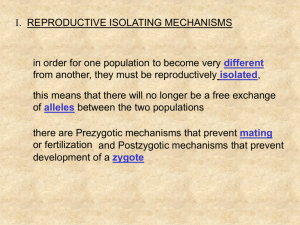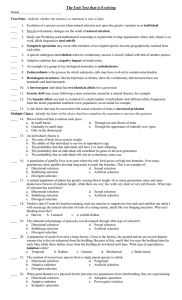Allele frequency may change in populations due to:
advertisement
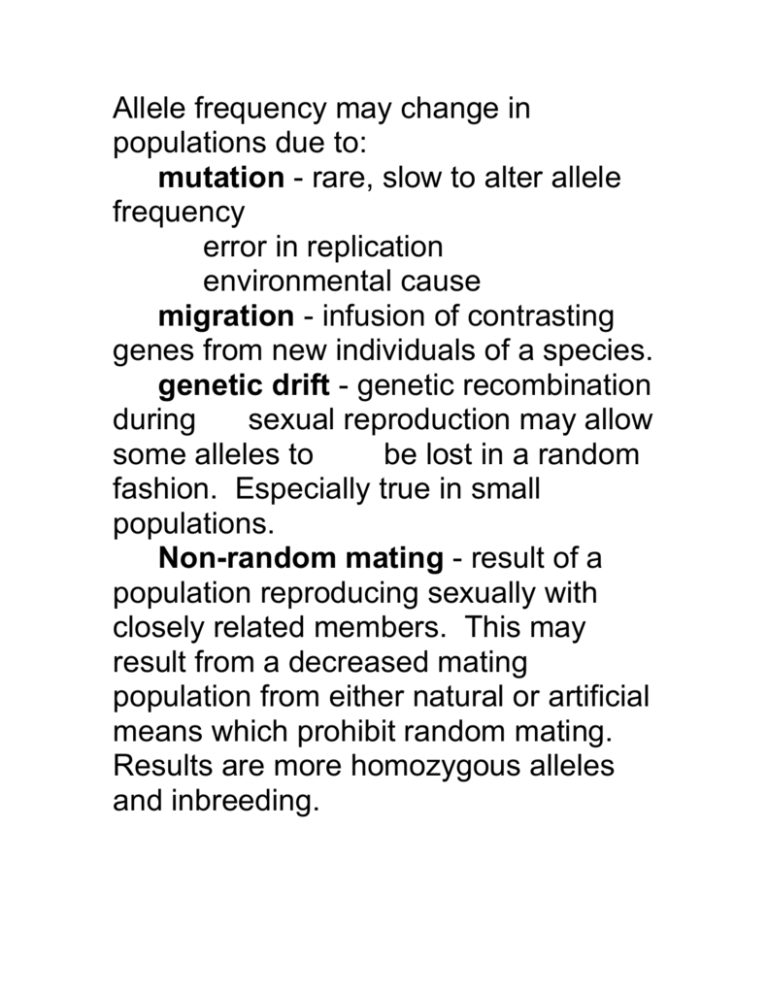
Allele frequency may change in populations due to: mutation - rare, slow to alter allele frequency error in replication environmental cause migration - infusion of contrasting genes from new individuals of a species. genetic drift - genetic recombination during sexual reproduction may allow some alleles to be lost in a random fashion. Especially true in small populations. Non-random mating - result of a population reproducing sexually with closely related members. This may result from a decreased mating population from either natural or artificial means which prohibit random mating. Results are more homozygous alleles and inbreeding. Selection - alleles removed from breeding population or increased in abundance in a breeding population. artificial - human guidance of breeding results in artificial development of traits. natural - alleles for negative traits are selected against due to mortality of carriers. Alleles for positive traits are selected for by passage of genome to future generations. Hardy-Weinberg Principal of genetic equilibrium Assumptions: 1) no mutations occur 2) no individuals enter or leave through migration 3) The population is large 4) individuals mate randomly 5) natural selection does not occur If any of the assumptions are not met, then evolution will occur. Most alterations in the genome have no significant phenotypic effect. Statistically speaking, many such alterations must occur before a phenotypic change occurs. When an observable trait does occur in offspring, the change is usually negative. Positive changes are extremely rare. Changes which have no observable effect at one point in time may have dramatic effect in the future when the environment changes. Speciation - local populations become highly specialized through microevolution. Continued speciation through time results in a macroevolutionary change, the development of a new species. Isolation of a population Geographic Island Darwin’s finches Mammoths Desert pupfish Behavioral Bird stratification 5-lined & broadhead skinks Prince William sound orca Sexual selection Ecological steep slopes windward & leeward Temporal fungi tucahei (New Zealand) Mechanical Bacculum Rate of speciation Gradualism Punctuated equilibrium Adaptive radiation filling of unoccupied niches of new habitat Darwin’s finches Convergent evolution vs. divergent evolution unrelated species same species Coevolution - under our noses Trees & microrhizal fungi Iris & wasp Bats & cacti or bats & tropical fruit trees Extinction

